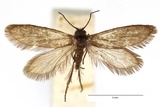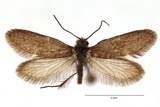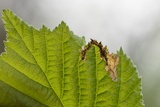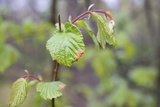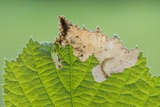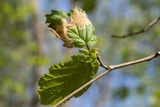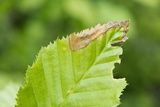Paracrania chrysolepidella (Zeller, 1851) Species
Last modified: Dec. 16, 2025, 6:38 p.m.
This is a rare species that was not recorded for more than 30 years but has been mentioned now for almost the whole of Belgium since 2004. It can sometimes be found in high numbers.
Details
- Classification
- Family: Eriocraniidae > Genus: Paracrania > Species: Paracrania chrysolepidella
- Vernacular names
- Slanke purpermot (NL), Small Hazel Purple (EN), Hainbuchen-Trugfalter (DE)
- Synonyms
- Paracrania kaltenbachii (Wood, 1890)
- First mention in Belgium
- De Fré Ch. 1858. Catalogue des Microlépidoptères de la Belgique. — Annales de la Société entomologique belge 2: 45–162. On page 115 (as M.[icropteryx] Chrysolepidella. Koll.; Zell.; H. S.). view page
- Status
-
Native
Distribution
Imago
Wingspan 8–13 mm.
The moths display a metallic sheen and are hard to distinguish from the other species. Nevertheless, they often look a bit slimmer and have golden and purple-red scales.
This species also has a striking silvery comma-shaped stain.
Caterpillar
The caterpillar is white and has a pale brown head.
Mine
The large blotch mine is located close to the leaf margin and sometimes causes partial curling of the leaf. The black frass in the mine lies in so-called spaghetti strings.
See also bladmineerders.be
Cocoon/pupa
Pupation takes place inside a tough silken cocoon.
Bionomics
Most likely, the egg is laid in a leaf bud. The mine is a large blotch mine that is located close to the leaf margin sometimes partially curling the leaf. The black frass normally lies, as with all Eriocraniidae, in so-called spaghetti strings but this is less distinct with this species or even completely absent. In that case, the frass is present as scattered grains.
The pupation takes place outside the mine.
The adult moths often fly in the sunshine around the host plants.
Flight periods
The moths are on the wing in April.
Observed on
- Host plant (species):
- Corylus avellana and Carpinus betulus
The larva mainly feeds on Carpinus betulus but also on Corylus avellana.
